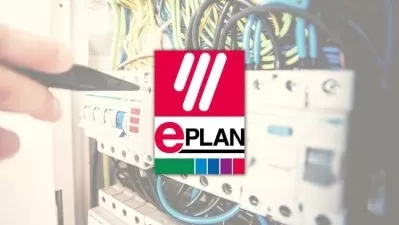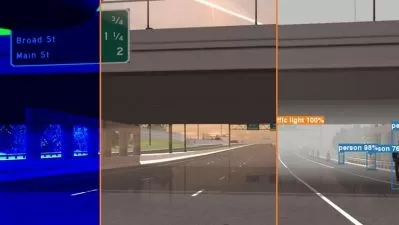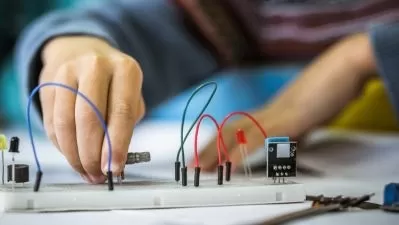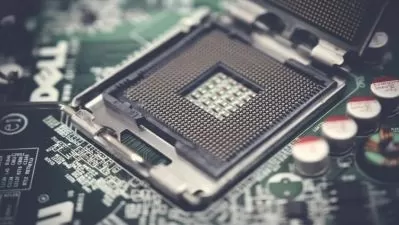STM32 Buck Converter Control Mastery
Halleluyah Kupolati
4:03:33
Description
Voltage Control, Current Control, Average Current Mode Control
What You'll Learn?
- Understanding Closed-Loop Control Principles
- Firmware Development for Current Control
- Firmware Development for Voltage Control
- Firmware Development for the Implementation of Average Current Mode Control
Who is this for?
What You Need to Know?
More details
DescriptionThis course offers a comprehensive and hands-on exploration of digital closed-loop control systems for buck converters, with a special focus on average current mode control. It is meticulously designed to cater to a wide spectrum of participants, including electrical and electronics engineers, embedded systems enthusiasts, STM32 developers, and anyone with a passionate interest in power electronics. The primary objective is to provide participants with the knowledge and practical skills necessary to design, implement, and optimize robust and efficient control systems from the ground up.
A key emphasis of this course is on achieving precise control of output voltage and output current in buck converters. Participants will gain a deep understanding of the underlying principles and practical techniques required for maintaining the output voltage within desired specifications. Additionally, the course focuses on efficient current control, preventing overloading or underutilization of the system through well-crafted firmware and control algorithms.
One of the unique features that sets this course apart is its concentrated attention on average current mode control. Participants will not only grasp the theoretical foundations but will also develop hands-on expertise in implementing this advanced technique. Average current mode control is a powerful tool for reducing output voltage ripple, enhancing transient response, and fine-tuning control precision in buck converters.
The course's hands-on approach ensures that learners not only understand the theoretical concepts but can also put them into practice. Through practical exercises and real-world examples, participants will work with actual hardware components, STM32 microcontrollers, and buck converter circuits, gaining the practical skills needed to effectively implement digital closed-loop control systems.
By enrolling in this course, participants will be well-prepared to tackle complex projects, advance their careers in power electronics and control systems, and contribute to innovation in this dynamic field. Whether you are a seasoned engineer or an enthusiastic newcomer, this course provides a pathway to expertise in digital closed-loop control systems, where precise output voltage and current control are at the forefront of the learning experience.
Who this course is for:
- This course is highly relevant to engineers, both students and professionals, who work in the field of electrical and electronics engineering, as it covers control systems and power electronics concepts that are essential for their work.
- Those interested in power electronics and switching converters who want to gain a deeper understanding of how to implement control systems in such circuits.
- Enthusiasts and hobbyists interested in building their own power electronics projects and exploring closed-loop control systems for personal or hobby purposes.
- Researchers and academics involved in power electronics, control systems, or related fields who want to gain hands-on experience and practical knowledge in digital control of buck converters.
This course offers a comprehensive and hands-on exploration of digital closed-loop control systems for buck converters, with a special focus on average current mode control. It is meticulously designed to cater to a wide spectrum of participants, including electrical and electronics engineers, embedded systems enthusiasts, STM32 developers, and anyone with a passionate interest in power electronics. The primary objective is to provide participants with the knowledge and practical skills necessary to design, implement, and optimize robust and efficient control systems from the ground up.
A key emphasis of this course is on achieving precise control of output voltage and output current in buck converters. Participants will gain a deep understanding of the underlying principles and practical techniques required for maintaining the output voltage within desired specifications. Additionally, the course focuses on efficient current control, preventing overloading or underutilization of the system through well-crafted firmware and control algorithms.
One of the unique features that sets this course apart is its concentrated attention on average current mode control. Participants will not only grasp the theoretical foundations but will also develop hands-on expertise in implementing this advanced technique. Average current mode control is a powerful tool for reducing output voltage ripple, enhancing transient response, and fine-tuning control precision in buck converters.
The course's hands-on approach ensures that learners not only understand the theoretical concepts but can also put them into practice. Through practical exercises and real-world examples, participants will work with actual hardware components, STM32 microcontrollers, and buck converter circuits, gaining the practical skills needed to effectively implement digital closed-loop control systems.
By enrolling in this course, participants will be well-prepared to tackle complex projects, advance their careers in power electronics and control systems, and contribute to innovation in this dynamic field. Whether you are a seasoned engineer or an enthusiastic newcomer, this course provides a pathway to expertise in digital closed-loop control systems, where precise output voltage and current control are at the forefront of the learning experience.
Who this course is for:
- This course is highly relevant to engineers, both students and professionals, who work in the field of electrical and electronics engineering, as it covers control systems and power electronics concepts that are essential for their work.
- Those interested in power electronics and switching converters who want to gain a deeper understanding of how to implement control systems in such circuits.
- Enthusiasts and hobbyists interested in building their own power electronics projects and exploring closed-loop control systems for personal or hobby purposes.
- Researchers and academics involved in power electronics, control systems, or related fields who want to gain hands-on experience and practical knowledge in digital control of buck converters.
User Reviews
Rating
Halleluyah Kupolati
Instructor's Courses
Udemy
View courses Udemy- language english
- Training sessions 11
- duration 4:03:33
- Release Date 2024/01/13

















